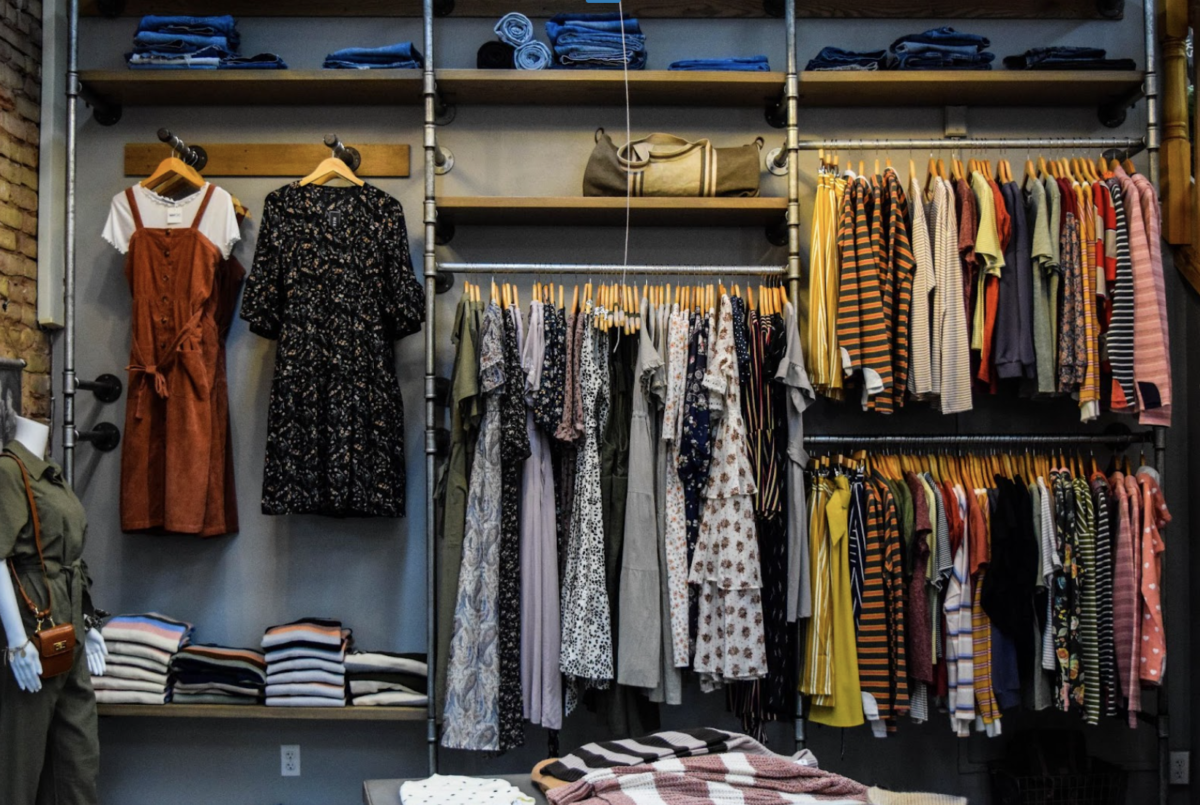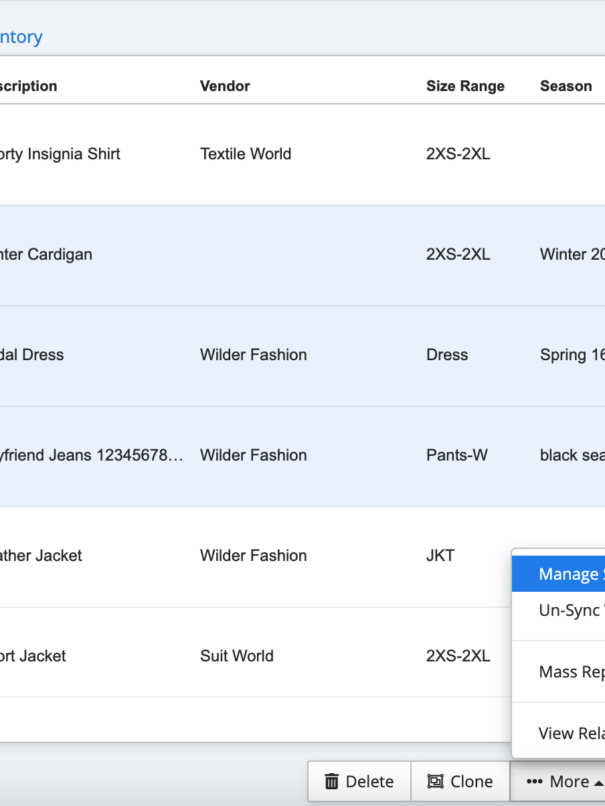A value chain is a set of activities that a company performs in order to deliver a product to customers. All the stages involved in moving a product from its ideation to distribution, including design, manufacturing, distribution, and marketing, make up a value chain. The value chain for organizations that manufacture goods begins with the raw materials used to create the products and includes everything before the product is sold to end customers.
But what is the importance of a retail value chain? How can it help boost your company’s efficiency and productivity? We’re answering these and more questions related to retail value chains in this article.
Photo by Burgess Milner on Unsplash
How Do Retail Value Chains Work?
A value chain can assist an organization in identifying inefficient areas of operation, and then support decisions and optimize activities to maximize productivity and profitability. Value chain analysis can also help businesses to ensure their clients feel secure and confident enough to remain loyal.
Michael E. Porter, the founder of the value chain idea, divides a company’s activities into two broad categories: primary and support.
Primary activities contribute to a product’s physical creation, maintenance, sale, and support.
- Inbound logistics refers to the internal management and handling of external resources such as vendors. Known as ‘inputs’, these external resources can include raw materials.
- Operations are all processes and activities that convert inputs into products or services (‘outputs’) that the company sells to consumers by charging a greater price than the price of materials and manufacture.
- Outbound logistics is the delivery of products and services to consumers. Systems for collecting, storage, and distribution are all part of the process.
- Sales and marketing. Brand-building and advertising are examples of activities that aim to reach an audience, raise visibility, and explain why a consumer should buy a product/service.
- Service. Product support and customer service are examples of activities that help maintain strong relationships with the people who have bought a product/service.
The support activities support the company’s primary activities and include:
- Procurement. Obtaining the essential resources and materials needed to develop a product/service, including finding vendors, managing vendor relationships, negotiating costs, etc.
- Technological development. IT management, cybersecurity, and research and development are all activities that help a business establish and sustain its technological capabilities.
- HR management. Recruiting, training, establishing and maintaining company culture, and keeping strong employee relationships are all part of this.
- Company infrastructure encompasses all necessary business activities such as general management, legal, administrative, finance, accounting, quality assurance, and public relations.
2.1. Value Chain vs Supply Chain
Value chain and supply chain are two mechanisms that help turn product ideas into actual products. As a result, they are frequently confused. Both of these concepts, however, approach the same process in a different way and have different objectives.
The key difference between a value chain and a supply chain is that the latter doesn’t provide value. The major role of a value chain is to add value to the commodity so that it can be given to the consumer, whereas the main function of a supply chain is to transport a commodity or material from one company to another.
Supply chain management is the practice of planning and controlling supply chain activities, while the purpose of a value chain is to provide a company with a competitive advantage by boosting productivity while keeping costs low.
Stages of the Retail Value Chain
The retail value chain consists of the following four steps:
Creating the product. A product must be developed before a company may sell it. Companies can make these items by obtaining raw materials from external sources or by using their own resources.
Inventory management. After a product has been manufactured in sufficient quantities, the manufacturer must keep the goods until they’re ready for the next phase. Inventory products are tracked as they arrive in the warehouse, counted, stored, and prepared for delivery to retail outlets. Using retail inventory management software can make inventory management much easier by replacing physical inventory sheets, and help you to quickly estimate the value of your ending inventory over a given time by automating the retail method of inventory.
Distributing goods. Distributors are in charge of transporting items from warehouses to retail stores. It’s their responsibility to deliver the goods on schedule, in good condition, and on budget. Clothing inventory management software can help make sure that seasonal clothes, such as winter coats and summer shorts are delivered on time to meet customer demand, and that enough items are available during busy shopping days like Black Friday.
Making the product available to consumers. When the items arrive at the stores, retailers need to figure out if they have the right things in the right amounts to meet client demand. If they offer too few things, the goods will sell out rapidly, leaving barren shelves for late-arriving clients. If, on the other hand, retailers stock too many things to match client demand, those products will sit on the shelf, unable to generate revenue.
Why is Retail Value Chain Important
The value chain framework can benefit companies in the following ways:
- Determine inefficient areas for corrective action.
- Provide decision-making support for many business activities.
- Optimize operations in order to increase output while lowering costs.
- Recognize the connections and interdependencies between various company sectors and activities.
- Recognize your primary competencies and opportunities for growth.
- Create a cost advantage over your competitors.
Photo by Highlight ID on Unsplash
Example of a Retail Value Chain
The renowned Spanish clothing retailer and manufacturer Zara is one company that’s interesting to analyze from a value chain perspective.
Inbound logistics: Zara’s supply chain control is a significant component of its inbound logistics, with about half of its products manufactured in Spain and the rest manufactured elsewhere. However, before being distributed, all of the goods are received and kept in warehouses. The company has set up its manufacturing centers without specified prints or colors in order to be able to react quickly to minor market changes.
Operations: The company’s headquarters and key design departments are based in Spain, which allows for easy collaboration with the purchasing department to make quick choices and changes. In addition, the retailer has three distinct and autonomous lines: women’s, men’s, and children’s clothes. This ensures that each line can respond to market developments rapidly and make decisions without requiring approval from other departments. Procurement, design, marketing, and sales exist for each of the three lines, but they are handled differently.
Outbound logistics: Zara’s main distribution of clothing occurs at the beginning of fashion seasons, which coincide with actual weather seasons. Shop managers should keep this in mind and endeavor to order clothing quantities as accurately as possible. They rely heavily on projections and data to reach that precision. Fast apparel distribution is a key aspect of the company’s outbound logistics, and in order to achieve this, shipping within Spain takes 24 hours while deliveries overseas take 40 hours.
Marketing and sales: Zara doesn’t invest significantly in promotion and marketing compared to other fashion brands and instead employs other innovative commercial techniques. Clothing is displayed and sold for a limited time in order to keep buyers interested and coming back in search of new items or discounted products. As a result, unsold products account for only 18%. As this strategy can increase the cost of labor, the company keeps its marketing and advertising costs low in order to reach balance and keep a competitive advantage.
Service: Zara follows numerous principles to retain consumer interest and satisfaction, in spite of the fact that they focus on product management and do not require great service support. The company’s rule is to avoid long waiting periods and formation of lines in their stores. As the majority of their customers are young, the purchasing process has to be completed quickly, so personnel are instructed to assist clients who are in a rush or require assistance. They also strive to reply to customer requests and concerns as promptly as possible.
The Bottom Line
The activities and people involved in taking a product from concept through distribution are documented in a value chain. Understanding your retail value chain allows you to think about your profit margins and determine how to create more value with less money.
A retail value chain can not only help you cut costs while enhancing the value of your product or service, but it can also differentiate your brand from the competition. Perform a value chain analysis on your own, adapt the basic value chain model to your organization’s unique characteristics, and appropriately manage the activities, and you’ll see greater revenues and efficiency in the end.







